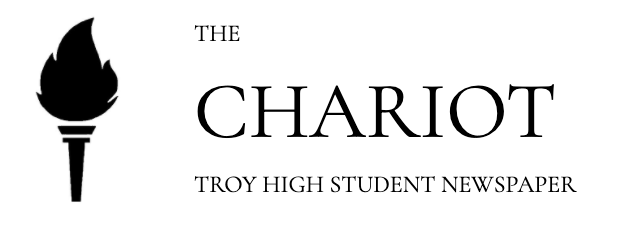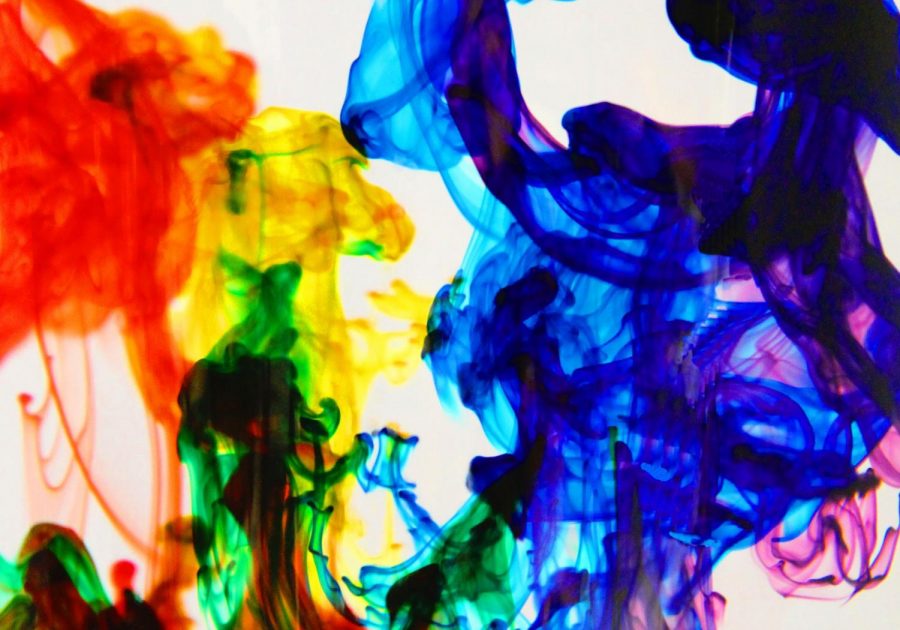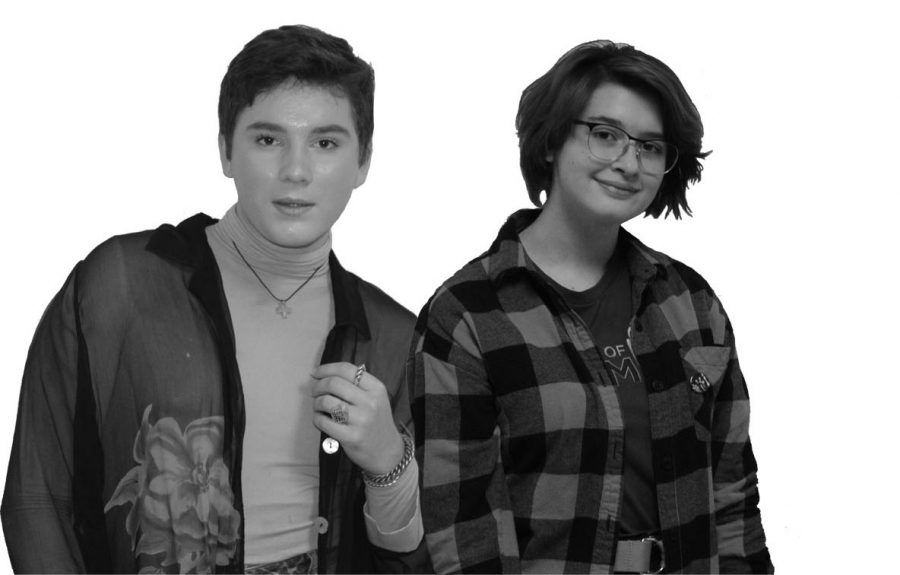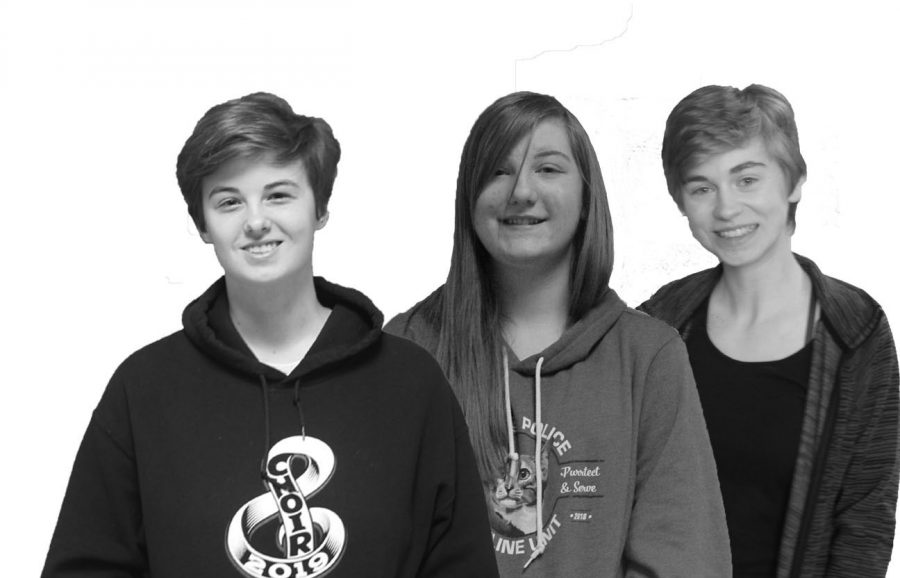Rearranging the Alphabet
February 19, 2020
“We’re not gonna sneeze on your children and make them shake a stick at God,” freshman Cate Deller said. “Just because your kid is gay, trans, bi, doesn’t mean that they are a bad person. I don’t see [being lesbian] any different as being straight; girls are just cute, you know?”
To many students, the LGBT community is like its own alphabet, each letter representing a different sexual orientation or identity. L is for lesbian, G is for gay, B is for bisexual, T is for transgender and there is much more. While lesbian refers to a woman who is attracted to other women, the term “gay” has a number of meanings. Most often used to describe a man who is attracted to other men, it is also sometimes used to refer to all people who are attracted to people of the same sex. Even bisexual people, who are attracted to people of the same gender and people of other genders, sometimes use the term “gay” as a self-chosen label.
Junior Brianne Boyer is bisexual and wants people to know that she’s not confused.
“I am attracted to males and females,” she said. “Just because I’m in a straight relationship doesn’t mean I’m not bi anymore.”
Senior Tomas D’aoust echoes Boyer on the harmful stereotypes, such as the “gay best friend” which comes from different romantic comedies starting in the 80s.
“I always tell my friends, I’m your best friend and I’m gay, I’m not your ‘gay best friend,’” D’aoust said.
There are so many different sexualities in the LGBT community, but there are also different genders. Being transgender describes people whose gender identity does not match the sex they were assigned at birth. To a lot of students, it might sound confusing because it differs from sexual orientation, but it can be simple.
“Gender identity is something that’s a little bit shaky when it comes to the [LGBT] community,” senior Leo Peck said. “There’s a lot of controversy, but to me it’s just my gender. It’s as natural as walking is. I’ve just been a man.”
Many students can agree that acceptance of the LGBT community is continuously improving, but it wasn’t always like that.
In June 1969, a routine police raid on a suspected gay bar in Greenwich Village New York, ended in one of the most influential riots of the late 1960s. Stonewall Inn was owned by the mafia and catered to lesbians, drag queens, male prostitutes and transgender people. Stonewall Inn ended up in flames, which ignited a revolution of gay pride that still exists today with pride parades around the world.
The LGBT community is one of the newest civil rights movements around the world, with many countries still not recognizing people of the LGBT community. While the United States legalized gay marriage in 2015, there are still strides the country can take at being more accepting.
“In eighth grade people would judge me a lot because I had short hair and I wore a lot of suits and plaid flannel to school,” Boyer said.
Many students know what the LGBT community is, a community between lesbians, gays, bisexuals, transgender people and much more, but for people in the community like D’aoust and Peck, it means so much more than that.
“It’s a lot of discourse, but I like it,” Peck said. “It’s a good place if you’re just starting out. It’s like a family if you don’t have one.”
Sophomore Declan Mallaney also agrees saying that it’s somewhere he can be himself and feel safe.
“[The community] is a really accepting place for the most part and to me it’s a place where I can be myself in pretty much every way,” Mallaney said. “I just feel safe.”
Although Mallaney and Peck say the community is a great place, D’aoust appreciates the normalness.
“Even though our community may seem amazing we also have normal problems,” D’aoust said.
Michigan is one of many states in the United States that permits legal discrimination of the LGBT community. Out individuals risk being fired from their jobs or evicted from their homes. This discrimination doesn’t just exist in the working world.
“Sometimes when I have my extreme looks, I’m afraid to go into the boys bathroom and stuff and when I was still not out, I was really afraid of the boys locker rooms,” D’aoust said. “I felt the most unprotected in those areas.”
Not everyone is out of the closet and not everyone has the same experience coming out.
“Coming out is a very personal thing,” Mallaney said. “If you don’t feel comfortable or safe doing it, then don’t do it.”
For someone still in the closet, Boyer suggests finding someone you’re comfortable telling and approaching them first.
“Find someone you can trust that is out of the closet and talk to them about how you can come out,” Boyer said. “Sometimes parents make it very difficult.”
D’aoust has something a little different to say.
“No matter how you’re feeling or if other people are going to pass judgement, it doesn’t matter in the end because you’re in charge of yourself,” D’aoust said. “The hardest part is not accepting other people’s decisions, it’s accepting you for who you are.”
In The Media
In recent years, LGBT representation in the media has been found few and far between. While there is some inclusion in TV, movies and books, most are minor roles and are meaningless to the story line. Many viewers believe characters are often treated poorly, portrayed incorrectly or end in a tragic way. On the other hand, there are some shows and movies that portray the community well and fairly.
“Orange is the New Black,” a Netflix drama, is an example of positive representation of members of the LGBT community in the media. The show is about a women’s minimum security correctional facility. Many of the characters are members of the LGBT community, and the show displays real life scenarios without romanticizing or overly sexualizing the content.
“The Fosters,” a television show on ABC Family that aired for five years and ended in 2018, shows LGBT relationships in a pretty positive light as well. The show consists of two mothers raising a family together. Their daughter, Callie Jacob, dates a trans man named Aaron, whose gender identity isn’t brought up unless absolutely necessary.
One international show that depicts LGBT experiences is the Norwegian Web series “Skam,” which has now been adapted all around the world. The series shows all types of issues that teens face; this includes coming out to friends and families. In the original series, characters Isak Vlaterson and Even Bech Næsheim are two teenagers who are both struggling with their sexuality in their own way. With the third season revolving mostly around Isak, the viewer gets an inside look into the extremely realistic life of a teenage boy trying to accept himself.
Many shows have influenced LGBT viewers and included LGBT characters of their own, but many of them have been treated unfairly. Originally a book by Kass Morgan, the TV series “The 100,” which airs on The CW, formerly treated their LGBT characters poorly. Alycia Debnam-Carey’s gay character Commander Lexa was killed off at the end of season three. Backlash from viewers on social media led to an apology from one of the producers, Javier Grillo-Marxuach, at the San Diego Comic Con 2016.
“There is something called the lesbian death trope which has deep roots in homophobia,” Grillo-Marxuach said. “Whether we intended to or not, we played into it. Now we are looking at a community which is mobilized and using social media very productively to move forward an agenda that is saying we do not want to see this anymore.”
Sometimes viewers will see the community being used to keep or increase TV and movie views. Media such as “Riverdale,” a teen drama on The CW, and Star Wars: The Rise of Skywalker, the ninth installment in the Star Wars franchise, have been accused by the public of queerbaiting. The term “queerbaiting” is a marketing strategy that companies and creators use to advertise while avoiding same sex relationships in the content. They do this to attract audiences that the show might not normally get.
Not everyone is aware of this happening, but some members of the community can catch even the smallest thing.
“Even if a lot of people don’t notice it, as someone who is part of the community it does stick out,” senior Lexi Novoselsky said. “It could be the smallest thing and I could still notice it.”
Although there is negative representation of the community, there are some positive moves that have been made.
“People are starting to realize that not everyone is the same,” senior Ronnie Roach said. “Not everyone likes the same gender. That needs to be represented in the media just like straight people.”
Representation or Fetishization?
As time goes on and the internet begins to show more content, members of the LGBT community appearing in the media is becoming more common.
This representation, however, is not always positive. Many young people are familiar with games and apps which cut to advertisements that feature illustrated couples, often same-sex individuals, engaging in risque acts. It is unclear whether to be open to this new side of the media, or to resent them as fetishization.
Freshman Alysa Brown criticizes fetishization.
“I don’t think being part of the LGBT community is something you should draw that much attention to, they’re just people,” Brown said.
On the contrary, freshman Adrien Crowell believes that these new media additions can be used for the greater good.
“I think it helps people feel more included because the entire community is being represented,” Crowell said. “Some people feel a little bit more accepted with it.” Not everyone sees these comics and TV shows the same. Some may think that the addition is a bit too much, while some think that it helps others in the community feel safe and respected. Sophomore George Lawless looks at this subject from more than one perspective.
“I think [LGBT representation is] important to be in movies so we understand their point of view instead of just having our own point of view,” Lawless said. “We think of them being the weirdest people you’re ever going to know, but really, they’re the nicest people you’re ever going to meet.”
Lawless also sees how this specific depiction might be a problem to others.
“They make it so sexual in comics, and they have a vision,” Lawless said. “We can see the characters talking to each other and what they’re thinking and what they’re seeing, but [the comics] are turning all these into sexual things.”
Lawless explains how members of the LGBT community act like every other person, but in some parts of the media, these people’s true personalities become twisted for someone else’s enjoyment. Conversations, movements and even wardrobes are changed to make the reader believe that scandalous things will happen between the characters.
Everyone has their own opinion on fettishization of LGBT members, whether they’re aware of this trend or not. It’s up to the individual to stand up against the media, or to accept and protect this new movement.



